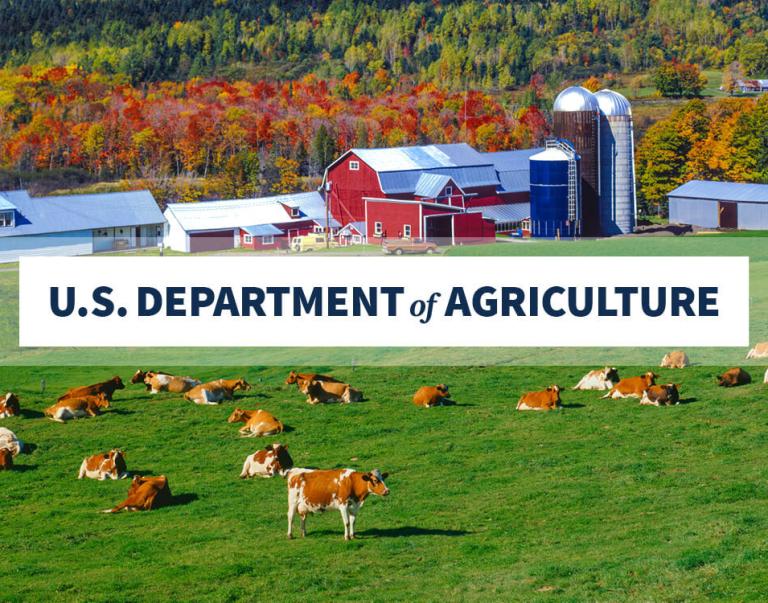About

USDA wants to make it easier for you to make and keep your website focused on providing the best experiences to your customers: the American agricultural producers and consumers who rely on your sites.
Our Digital Strategy site does this by:
Clearly outlining the multiple mandates your website must follow
Helping you find resources and expert advice to meet those mandates
Getting Started
Each section of the Guidelines offers an overview of the challenges your website needs to address. We’ll give you high-level strategies to follow, goals to shoot for, and resources and tools to help you.
We want to help improve your website’s customer experiences. Along the way, we’ll help you increase your Search Engine Optimization; remove or archive unneeded content; improve the quality of your website analytics; comply with the mandates and laws governing your websites; and achieve your business needs.
Research
Learn about methods to gain insights into your customers and keep them at the center of your design and development efforts.
- Why Research is Important
You need to understand who your visitors are and what they’re trying to accomplish on your website. Much of this requires quantitative data from web analytics and surveys, but to get the best insights, you must experience your site, application or service through the eyes of your users.
To understand the full context of the needs of current or potential users, you can get qualitative data through user research, using tools like interviews, focus groups, and field research where you observe and interact with people in their real-life environments (ethnographic research).
Analytics
Follow USDA’s Google Analytics standards and you’ll fix common issues, improve site performance, and generate more useful reports.
- Why Analytics are Important
You need accurate web analytics, consistently applied across the organization and mapped to your business goals, so you can understand what customers are doing on your websites. This will help you make better, data-driven decisions on how to improve your sites and content to meet customer needs.
Content
Find out how to do content audits, update your content strategy, and make your content more findable with search engine optimization.
- Why Content is Important
Content is the reason your website exists. However, if your content is hard to find, doesn’t reflect your organization’s goals, or isn’t organized in the way your customers expect, you can’t truly meet your customers’ needs.
Your website analytics and customer research should inform your decisions on how you organize and present your content. You should perform a content audit next so you can identify redundant, outdated, or trivial (ROT) content that you can remove, archive, or consolidate. By doing so, you make it easier for your users to find what they need (and pick up additional search engine optimization [SEO] benefits for your site).
Accessibility
Make sure you’re reaching the biggest possible audience by removing technological barriers through accessible and responsive web design.
- Why Accessibility is Important
If your websites and documents aren’t easily accessible to people with varying levels of ability, you’re not just creating barriers between customers and the vital USDA information they’re seeking—you’re violating federal law. USDA currently tests for accessibility to people with a wide range of disabilities including visual, auditory, physical, speech, cognitive, language, learning, and neurological.
Design and Brand
See how you can create a visually distinctive website for your agency that still meets USDA brand and visual design guidelines.
- Why Design and Brand are Important
Visual design is the “face” of your site. By strategically using images, colors, fonts, and other elements, you enhance the content and function of your page, engaging users and helping build trust in the brand.
By following USDA brand and digital guidelines—including using specified navigation and functional elements, logos, and web lockups—you can help ensure that visitors to USDA sites have a consistent experience, whether they’re looking for information on animal husbandry or zoo regulations (and everything in between).
This doesn’t mean that all USDA websites have to look the same. USDA agencies and mission areas still have the room to creatively express and fulfill their particular missions and serve their customer bases. (Rule of thumb: In between the top and bottom navigation bars, you can do what you want… as long as you also follow the best practices of modern web design).
Development
Understand guidance and use code libraries to build and update your site.
- Why Development is Important
Your development process must address everything from maintainable code, consistency, security, accessibility, and more. You need to build your websites so that customers are able to access USDA information no matter where they are—an office, grocery store, or the middle of a farmer’s field—and regardless of what device or browser they’re using. Furthermore, you need to deliver the best possible customer experience for your users by maintaining a high level of web performance, ensuring your content is searchable, findable, and delivered quickly. By following best practices and using consistent components, you reinforce the trusted brand of USDA and help assure your users that USDA websites provide official, definitive information from the United States government.
Social Media
Understand when and how to use social media to amplify your agency’s news, mission, and goals.
- Why Social Media is Important
USDA uses social media to reach the public quickly and easily, delivering information through a variety of platforms and formats as part of our integrated communications strategy. Social media can be used to communicate new developments at your agency and direct the public to critical information, like details about a current recall or wildfire. Agencies at USDA must only use tools that have been evaluated by the General Services Administration and whose Terms of Service agreements have been reviewed and approved by USDA's Office of General Counsel.
Our Sources
This site draws inspiration from other great federal digital playbooks, including those from Farmers.gov, the US Digital Service, VA, GSA 508 Accessibility, and more.
We’re including guidance and mandates from sources including the 21st Century IDEA Act, Section 508 accessibility standards, the Plain Writing Act, and USDA’s own brand guidelines and web standards (and by extension, the US Web Design System).
We also draw from many concepts and techniques (some of which you may already be using), including Human-Centered Design (HCD), Agile and iterative development, rapid prototyping, and more.
All of these techniques are designed to help you better understand your customer and content; create and deploy solutions to better meet their needs; and evaluate, iterate, and improve based on real-world performance.
Previous: Digital Strategy Homepage Next: Research
Not sure where to start?
Complete the Web Modernization Maturity Assessment. Use this tool to evaluate how well your site complies with the IDEA Act and target areas for improvement.
Creating a brand new website?
Check out this high-level checklist of tasks for setting up a USDA website or redesigning an existing one.
Tell Us What You Think
The USDA Digital Strategy is being produced iteratively and relies on feedback from you to tell us what content you need to see, as well as what is and isn’t working. To send feedback, email us at feedback@usda.gov.


